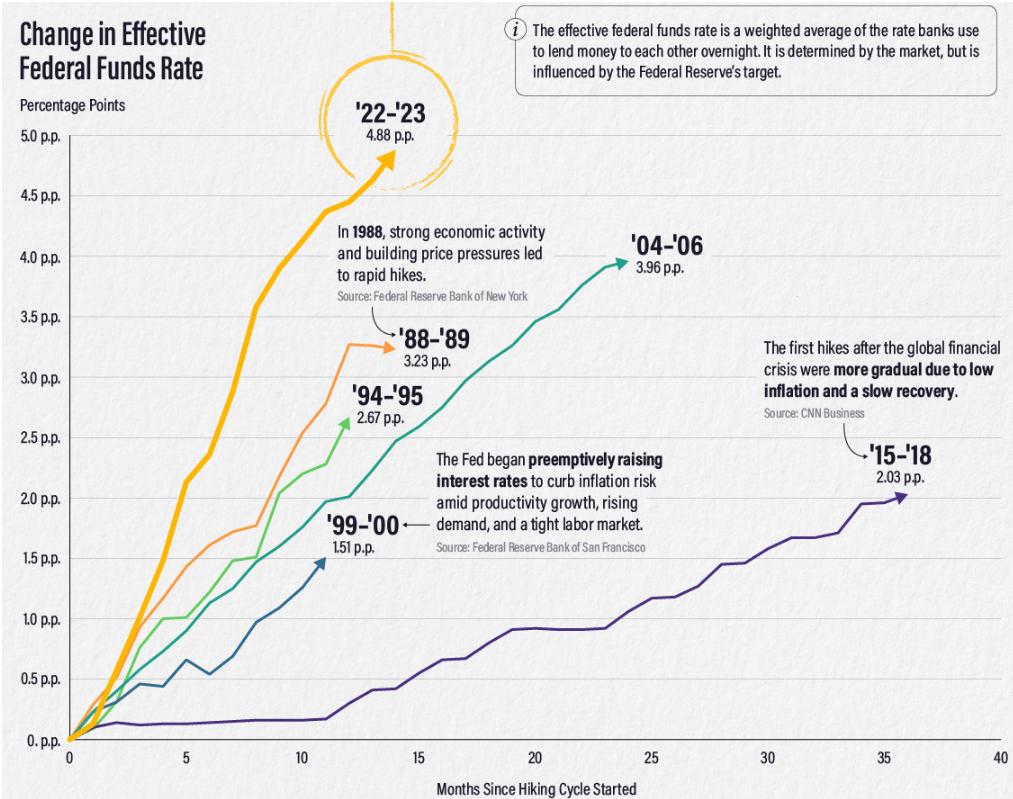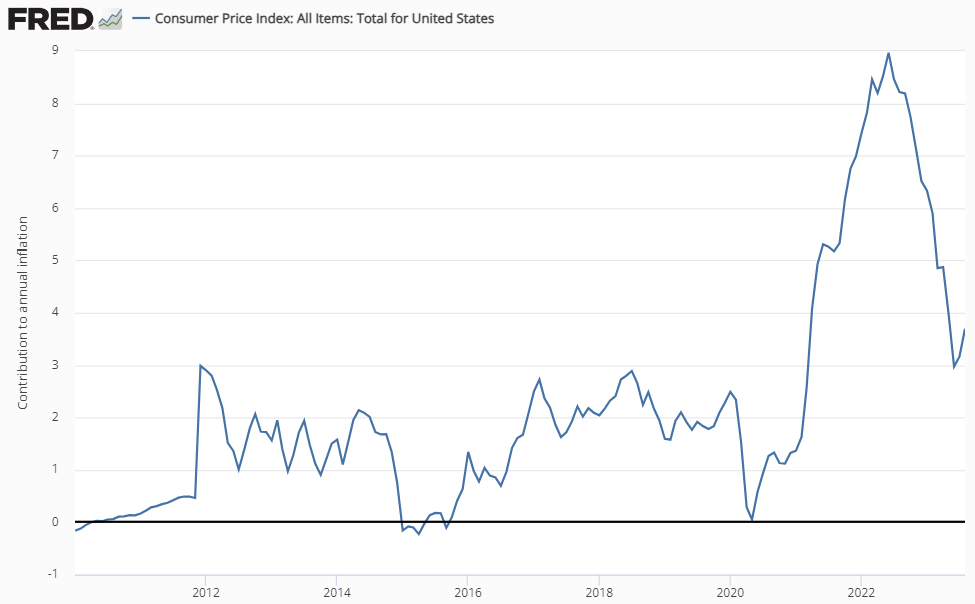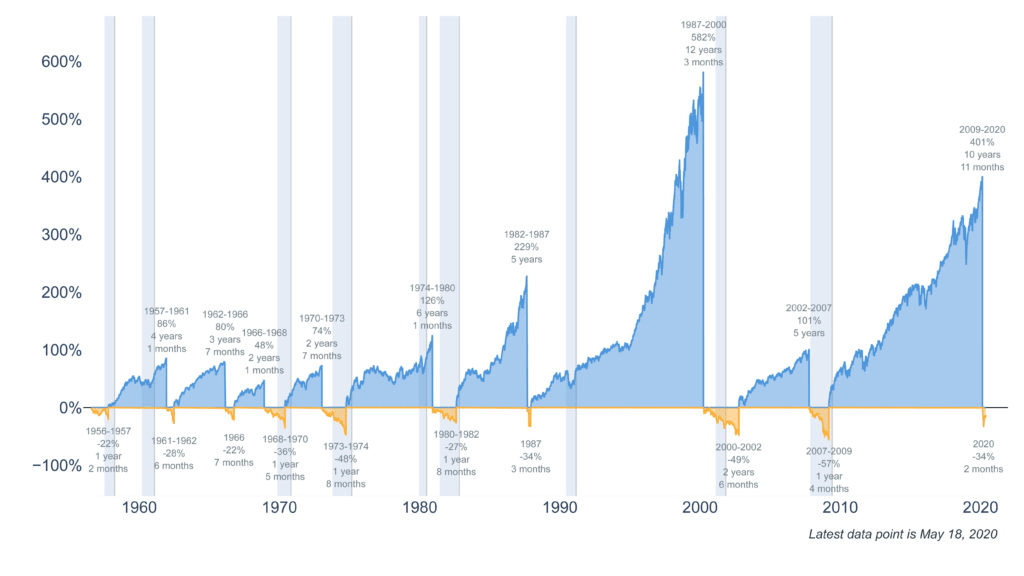The stock market just saw one year of gains (roughly 10%) … in one month!
And the portfolios here at Banyan Hill are logging in some massive wins…
- Ian King saw gains of 47% in some of his tech stocks, and as much as 159% in some of his crypto investments.
- Charles Mizrahi closed out a 58% gain on a health insurer and 53% on a satellite company.
- Adam O’Dell closed out options trades this week for 80%, 151% and 211% gain in just two days.
But Michael Carr takes home the trophy!
He closed out a one-week trade (call option on the Russell 2000) for a 166% gain.
And then, he did it again … for 238%.

If you want to see how he did it, watch this presentation now.
But Is It Too Good to Be True?
A lot of people would like this bull market to continue, including me.
It seems that inflation is cooling, experts are calling for lower interest rates next year and all the investors sitting on the sidelines are rushing in.
But I’m a little skeptical.
I’m sure you are too.
Is this a real bull market, or just a short-term “Christmas rally” that will end with a lump of coal?
Jamie Dimon, the billionaire chairman of JPMorgan Chase, recently issued this chilling warning: “This may be the most dangerous time the world has seen in decades.”
Dimon’s reasons were mainly around global conflict … the war in Ukraine as well as Israel. Those wars have “far-reaching impacts on energy and food markets, global trade and geopolitical relationships.”
Dimon is not alone.
Jeremy Grantham, co-founder and long-term investment strategist of GMO, warned: “My guess is we will have a recession. I don’t know whether it will be fairly mild or fairly serious, but it will probably go deep into next year.”
Leon Cooperman, CEO of Omega Advisors, issued this dire warning: “I’ve been of the view that the price of oil, the strong dollar, QT and the Fed will push us into recession. We’ve got to get our house in order or we’re headed for a crisis.”
BlackRock CEO Larry Fink worries that a recession might appear simply because people have given up on peace, particularly in the Middle East. “If these things are not resolved, it probably means more global terrorism, which means more insecurity, which means society is going to be more fearful and feel less hope, and when there’s less hope we see contractions in our economies.”
But a new study by Deutsche Bank might be the most chilling of all…
A 69%, 77% and 74% Chance of a Recession
They studied every U.S. recession dating back to 1854 and found three common culprits … and all three linger in our economy now.
Culprit 1 Equates to a 69% Chance of Recession
The first culprit is a quick rise in interest rates.
By “quick” they mean a rate hike totaling 2.5% over two years. When that happens, a recession follows 69% of the time.
And we just experienced the fastest interest rate rise hike in history, up 5.2% in just 18 months.

That’s double the Deutsche Bank “red line” warning and six months faster.
Culprit 2 Equates to a 77% Chance of Recession
The next culprit is inflation.
A rise of just three percentage points over two years means a recession will follow 77% of the time.
And in 2022, inflation rose from 0% straight up to 9% … one of the fastest spikes in history.

And yes, things are cooling now. But we are still far above the Federal Reserve’s target rate of 2%.
Culprit 3 Equates to a 74% Chance of Recession
The “inverted yield curve.”
This is a confusing term that economists love to toss around, so let’s break it down.
Usually, when the government issues bonds, it pays a higher rate for a long-term loan, like 10-year Treasuries. Short-term loans, such as three-month T-bills, pay lower rates.
Which makes sense.
If you are going to tie your money up for years, you should expect a better rate.
The inversion here is when the opposite happens … when the three-month pays a higher rate than the 10-year.
Why is this bad?
Because bond investors are pricing in a near-term recession, and the odds of a Federal rate cut will come soon.
So they avoid short-term bonds (price goes down, yield goes up) and pile into longer-term bonds (price goes up, yield goes down).
Right now, the 10-year U.S. bond pays 4.47%, but a three-month bill pays 5.4%.
Add these three culprits together, and you have three strong indicators that there is a 69%, 77% and 74% chance of recession.
Now, the fact that a recession is nigh should not come as a shock.
A recession happens about every five years, and the Federal Reserve has been trying to create one for two years to combat inflation.
But If a Recession Is Coming…
What Should You Do With Your Stocks?
Okay.
Here’s the bad news…
Of the last 10 recessions, 10 of them saw the stock market go down. So, historically speaking, the odds of the stock market falling are … 100%.
It usually dropped 20% but has fallen as much as 50%.
So, if you are looking to cash out of your stocks in the next year, that is a bad thing. You may want to start selling into this rally.
Time to Buy Gold? With everything I just mentioned, a few of you may be thinking about buying gold. I own some. It’s nice to have. A great “insurance.”
If you go this route, use my trusted friends over at Hard Assets Alliance. They have very low margins and can store the gold for you … for free.
But, if you are investing for more than a year (which is likely every person reading this article), a sell-off is a great thing.
A wonderful thing.
A gift from “Mr. Market,” as Charles Mizrahi likes to say.
Because here’s the good news…
Every time the market has gone down, it goes back up … usually about 5X higher!
Want proof?
Below is a chart that shows what happens after a recession hits, dating back to 1950.
The gray bars are recessionary periods.
You can see how, during a recession, the market pulled back.

It’s really important to realize how short, and tiny, the bear markets are. The typical bear market hangs on for a few months.
But bull markets?
Bull markets can run for years. And explode higher. Usually between 100% and 500%.
So, if you can withstand a potential pullback, and perhaps even leverage into it, you will be handsomely rewarded.
The best way to do that, of course, is to own shares of the companies that are financially strong and lead growing industries.
Those are the companies that will survive and thrive.
Well-run companies love a solid recession. It’s their chance to kill off their competition and grow.
Naturally, the stock prices of these companies can soar, even during tough times, as investors place their bets early on the eventual winners.
This is how people made 1,000%+ gains in Amazon, Google and Apple, and positioned themselves to capitalize on the following bull market.
Those people, by the way, are Charles Mizrahi, Ian King, Adam O’Dell and Michael Carr. Your team here at Banyan Hill.
They did it before. And they will do it again.
This Is Why I Created Banyan Hill
We named our company after the mighty banyan tree.
As a banyan tree grows, its branches drop down additional roots, which become a new trunk that keeps on expanding.
My family and I had the chance to visit one of the largest trees in Maui, Hawaii, last May.
A few months later, the town of Lahaina was hit with a devastating fire.
The tree survived.
And, living in Florida, I’ve seen these banyan trees survive many hurricanes, while other trees, like the mighty oak, just flop over.
They can’t withstand the winds.
But a banyan tree can.
They are more stable and have sources of nutrition from many trunks.
As investors, we need to be like the banyan tree.

We know storms will come. That is inevitable. A recession happens about every five years.
The key is to have many sources of wealth so that we can withstand the financial storms.
That is why I’ve spent the last decade bringing together the top minds in finance … Ian King, Charles Mizrahi, Adam O’Dell and Michael Carr.
And this last month, we’ve seen the results.
Again, these are the gains from the last month alone … gains of 47%, 159%, 80%, 151%, 210%, 166% and even 237%.
If you don’t have access to the team here at Banyan Hill, then you should do so now.
I have zero doubt … none … that you will make more money in the years to come if you have their guidance.
- Ian King has more of a focus on breakthrough trends. He was at the forefront of electric vehicles, crypto and AI. You can get access to him by watching this video.
- Charles Mizrahi is the Alpha Investor around here. He finds financially sound companies with amazing leadership that lead their industries. You can get more details by going here.
- Adam O’Dell is a Chartered Market Technician who uses his rating system to find top stock picks. His top-rated stocks beat the market 3-to-1. Get more details by going here.
- Michael Carr, “the professor” as we call him, teaches Wall Street traders at the New York Institute of Finance. He uses strategies to help you maximize gains. Go here to see how he can help you.
Which One Is Right for You?
Probably all of them.
But I get that it can be a bit overwhelming.
If you want to chat about it, shoot an email over to John Wilkinson at jwilkinson@banyanhill.com with:
- Your phone number.
- The best time to talk.
- Your investment goals.
John is our director of VIP services, and he’ll hook you up with our best prices.

Aaron James










